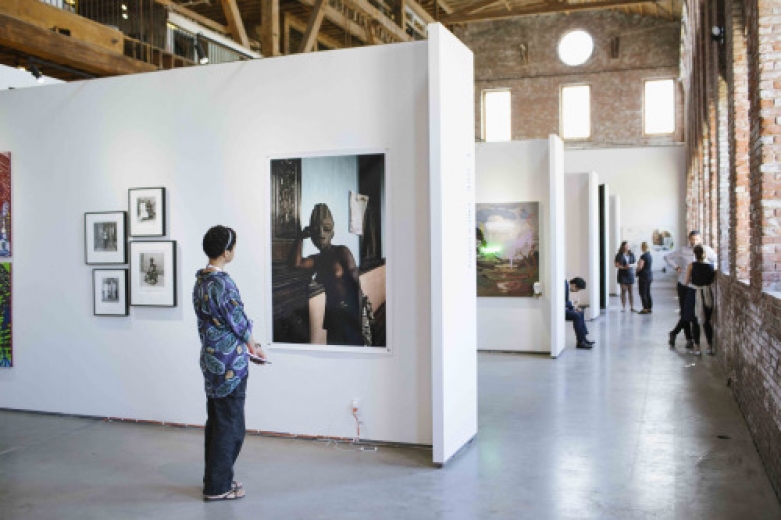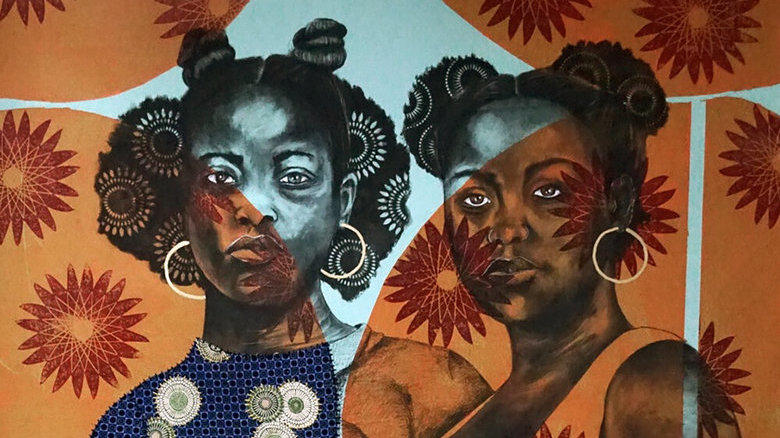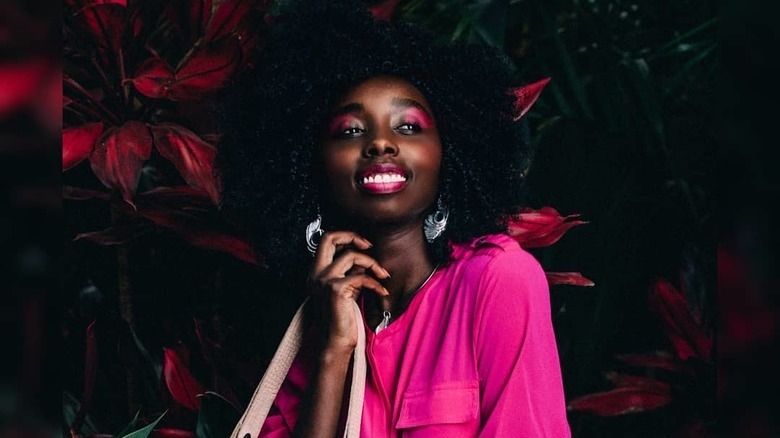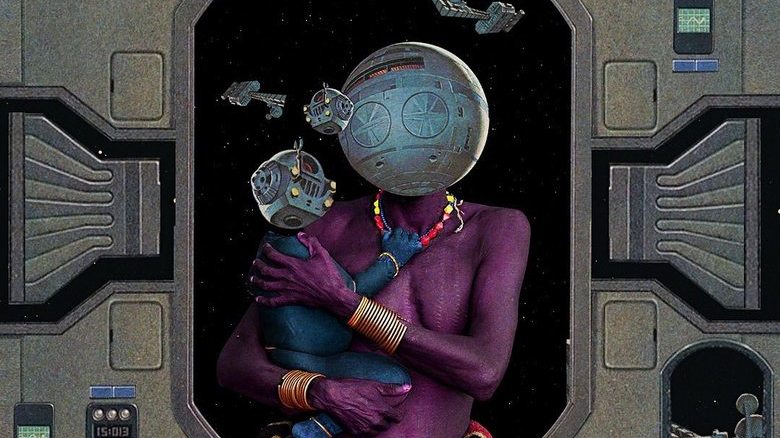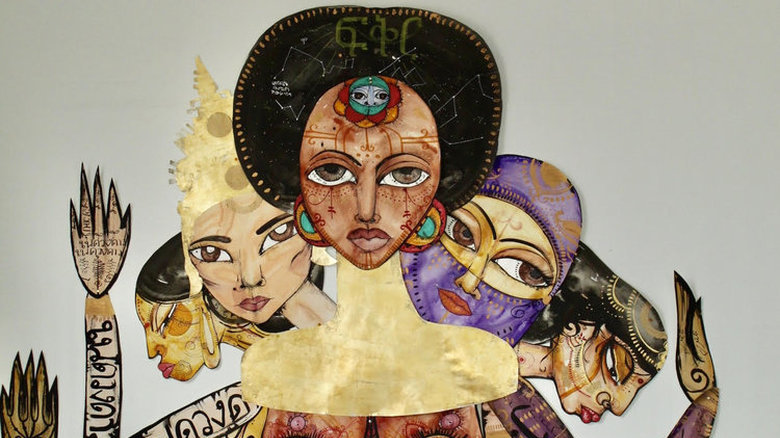11 Artists from London’s 1:54 Contemporary African Art fair
With the dates for the 2016 editions of the leading fair on contemporary African art already announced, though featured artist are yet to be announced, if the line ups from the past three years are anything to go by, there’s plenty to be excited about. After a successful debut edition in New York this year, the fair returns again to Brooklyn’s Pioneer Works from the 6 – 8 May, and will once again be held and Somerset House in London from 6 – 9 October.
Unable to attend this year’s 1:54 Contemporary Art Fairs, I too advantage of Artsy’s website that served as an online platform for browsable artworks from all exhibiting galleries, at both the New York and London fairs. Attending the festival on our behalf was writer Alice McCool who wrote a post on some of the standout artists whose works she experienced. Inspired by that post, I revisited Artsy and spent some time perusing their website in search of more artists whose works resonated in some way, or who were either new to me.
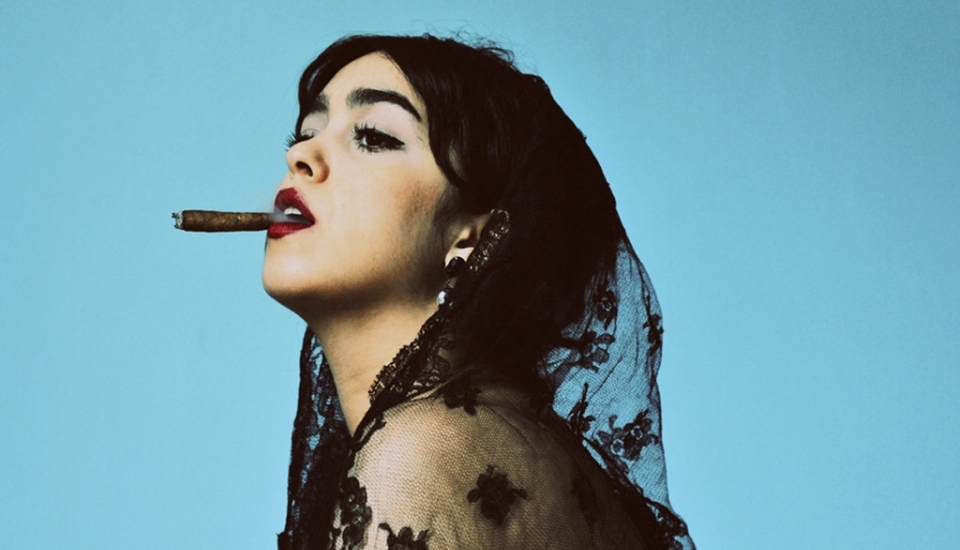
Marrakesh-born of both Moroccan Amazigh and Spanish descent, with a degree in Foreign Literature from Ca’Foscari University of Venice, Zahrin Kahlo describes her work as “based on the double identity of a woman who has decided to no longer be the symbol of a single culture.”
Using the intimacy and vulnerability of photography, for Kahlo its a medium that allows her to explore “an ideal way to represent the intimate sphere of a
woman, with all her ghosts, her fantasies, her complexities” using imagery as a way to “connect to memories and the unconscious, vulnerable with the traces and signs of the time and all its imperfections.”

(Chebet and Chemu in the garden, 2013)
Having lived and been educated at institutes both in Cape Town, South Africa, and Bahia, Brazil, and soon take up residency at the Fondation Donwahi in Abidjan, Ivory Coast, Kenyan photographer Mimi Cherono Ng’ok’s very intimate work focuses on her personal upbringing, experiences and encounters across different landscapes - from immigration and distance, to otherness and solitude.

Of Ghanaian, Anglo-Jewish and Jamaican heritage, London-based Kimathi Donkor has been exhibiting work since 1985, a year after he gained his Foundation Diploma in Fine Art from Bournemouth Art College. Going on to study at Goldsmiths College and later Camberwell College of Arts, Donkor is now represented by Gallery MOMO in Johannesburg, Omenka Gallery in Lagos and by Ed Cross Fine Art in London.
Channeling and inspired by his transnational upbringing, as well as his multicultural heritage, themes of his work primarily deal with re-imagined historic and mythic encounters across Africa and its global Diasporas, as well as social issues relating to black experiences.

London-born, raised in both England and Trinidad and Tobago, Zak Ové British-Trinidadian is a multidisciplinary artist whose works seek to reconnect his diasporic identity with African histories and various spiritual beliefs from the continent, specifically that which is explored through Trinidadian carnival.
In these visual reinterpretations, Ové makes use of sculpture, film and photography, merging ancient and ‘new world’ materials, to portray “the emancipation of personal existence through incarnation with an ‘other self’,” as a means of demonstrating the “power of play to free an individual from the contained experience of the self.”

Exhibited by CIRCA Gallery at 1:54 London 2015, Nelson Makamo is known for his vibrant portraits set in pulsating African urbanised landscapes. Born in 1982, he now lives and works in Johannesburg, South Africa. Observing the chaotic energy typical of cities with an astute sensitivity, Makamo captures humanity’s routine in an accelerating contemporary world.
In this interview, he discusses his work and practice: “I represent the voice of young South Africans. Not just South Africa as a whole but the continent as well. The things that they experience on a day to day. And it’s quite amazing because I think a lot of these experiences, when you start traveling, you realize that as human beings we share a lot in common. So that’s part of the journey that I actually go through in terms of my work.”
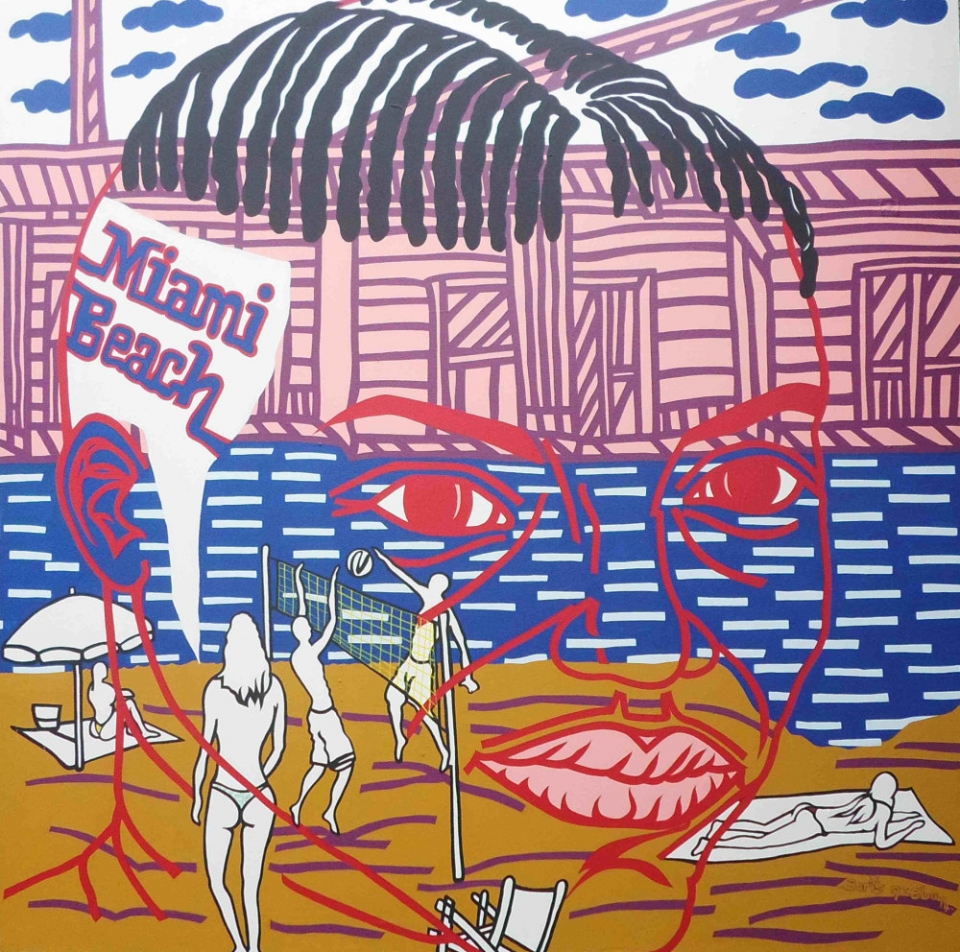
Currently based in Douala, Cameroon, Gabonese-born Boris Nzebo’s artistic signature lies in his use of juxtaposition, superimposition, layering and the marriage of colours and thick lines. His paintings, mostly portraits, reflect on the surroundings of his hometown Douala as inspired by the hand-painted adverts found in many beauty parlors throughout West Africa.
“Nzebo invests his works with psycho geographical impulse: their primary subjects are the elaborate hairstyles of men and women, which he lays on city views as integral features of the architecture…the heads incarnate the intimate relation between the individual and street life. This symbiotic connection allows for a multiplicity of readings of the image, rendering levels of information in a sort of visual polyphony that rhythmically integrates humans and the space they inhabit.”
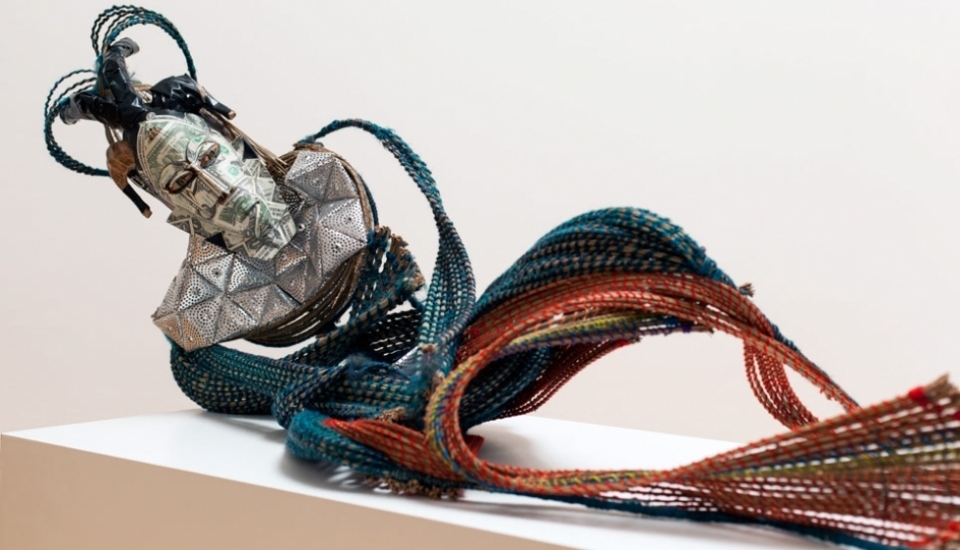
Both a sculptor and experimental video artist, Adejoke Tugbiyele’s talents occupy a diverse spectrum of artistic mediums.
From life-sized works that are informed by her Yoruba ancestry and that include the use of various repurposed materials such as wire, natural fibres, fabric, and wood, to her interrogation of subjects and issues related to sexual identity, women’s rights and human rights, Tugbiyele considers herself both an artist and queer activist.

Large tapestries of fabrics with bold embroidered writing sewn on to them, some of Johannesburg-born artist Lawrence Lemaoana’s best known works are regarded as such for their distinct statements that speak to both a historic and current political awareness of language, rhetoric and representation in his home country.
Lemaoana uses these capitalized statements to highlight the problematic role of the South African media and their framing of the issues pertaining to the socio-political state of country today, as well as a platform that serves as a reflection of activist struggles.

An incredibly talented illustrator, graphic, and textile designer, Nigerian artist Karo Akpokiere whose works sometimes resemble comic strips and cartoons. Often, his work reflects his personal experiences within diverse urban landscapes, in cities such as Lagos and London.
More than just a visual artist, Akpokiere is a storyteller whose work has featured on everything from murals and posters, to iPhone covers, t-shirt graphics, trainers and advertising.
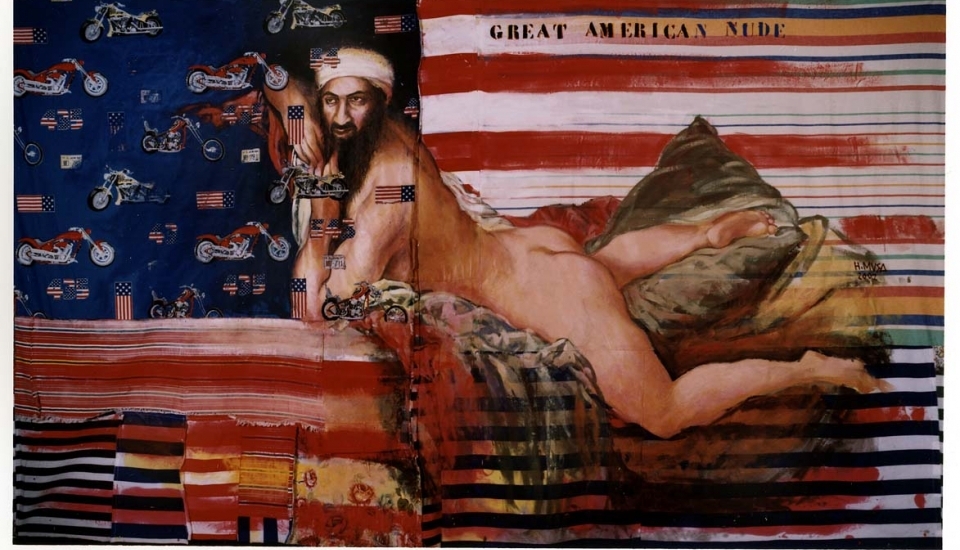
Born in El Nuhud, Sudan, Hassan Musa is an acclaimed calligrapher, illustrator sculptor, and multimedia artist whose art draws from a multitude of disciplines including European painting, the Arabic calligraphy or the Chinese watercolor. Much like the diverse elements that influence his style, Musa’s work reflects everything from religion to politics.
Musa is particularly know for his controversial pieces that comment on the social and political landscape of the present through the use of dominant iconic Western artworks, appropriating history to redefine and recontextualize their relevance in contemporary socio-political landscapes.
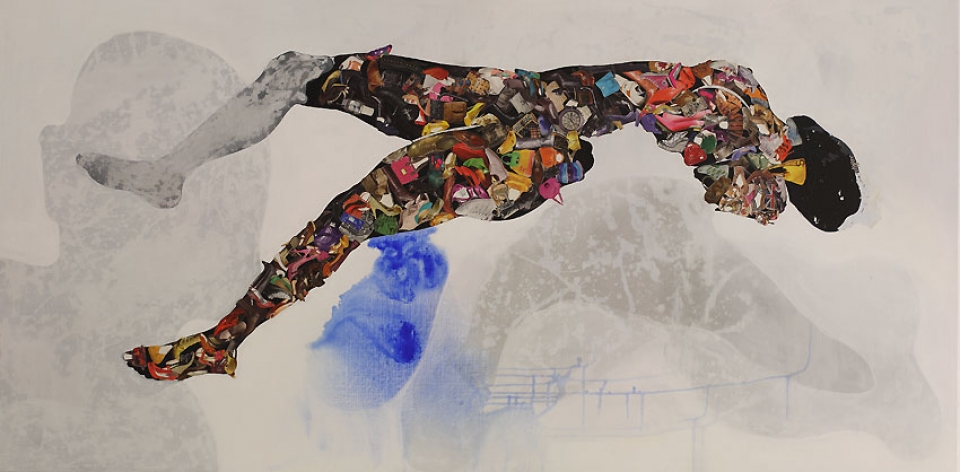
Both activist and artist, Kinshasa-born Congolese artist Vitshois Mwilambwe Bondo uses art as a platform of expression speaking to issues such as freedom, human rights, anti-colonialism, cultural encounters and dialogues between peoples from different parts of the world.
Experimental in his style, vision, technique and approach, Bondo describes his art as “neither limiting nor restrictive,” a reflection of the issues relating to globalisation that dominate much of his work. Speaking on this, Bondo describes the trend surrounding globalisation as a dichotomy of sorts, an “expression of resistance to homogenization, to the creation of a world of uniform people, but also a reaction to the confusion of aesthetic codes and cultural references.”
In going further on the definition of his art and the relevance of representations of Africa through it, Bondo stated, “My approach is meant to present and examine the problems of Africa in particular and the world in general. I create art to conscientize, to show things in a different way, through elements simultaneously hidden and revealed.”
